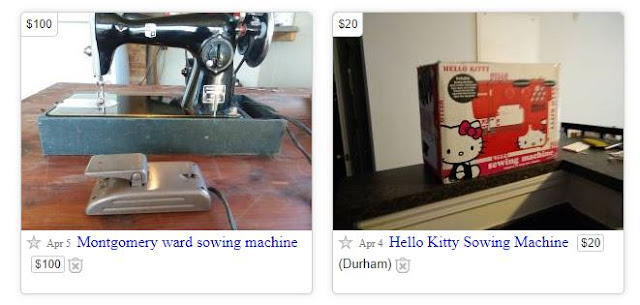This machine is a Singer 201-3, made in the UK. It sews beautifully. I've made several quilts on it. I bought it via ebay and rewired it when it arrived. The wiring was shot! Now it's good for another 7 or 8 decades.
My travel machine is a Bernina 170, it's been a great machine!
I have another Singer machine, this one is a 15-91. I used it to sew 1/4 inch
leather for an upholstery project.
But my favorite machine is my Bernina 640. It has over a million stitches on it.
















